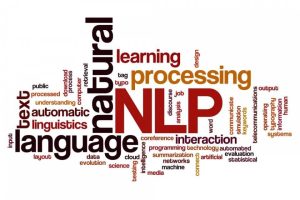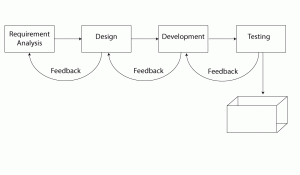Introduction to AWS: Navigating the Amazon Web Services Ecosystem
In Business, Official BlogIn today’s digital age, cloud computing has become an indispensable part of modern business. Leaders in this space include Amazon Web Services (AWS), which offers a comprehensive suite of cloud-based services that empower organizations to innovate, scale and grow In this blog post we begin a journey walk through the AWS ecosystem, exploring its key features, benefits and use cases.
Understanding AWS: An overview
Amazon Web Services, commonly referred to as AWS, is a division of Amazon that provides on-demand cloud computing platforms and APIs to individuals, businesses and governments, on a pay-as-you-go meter AWS launched in 2006. Cloud computing because Any in has been a market power, providing a wide range of services in areas including computing power, storage, networking, databases, machine learning and more
Major features of AWS
1. Technical Services
AWS offers a variety of computing services to meet a variety of business needs:
Amazon EC2 (Elastic Compute Cloud): Provides scalable virtual servers in the cloud, allowing users to easily deploy and manage applications.
AWS Lambda: Enables server less computing, allowing developers to run code without programming or managing a server.
Amazon ECS (Elastic Container Service): Manages Docker containers at scale, simplifying the deployment and management of containerized applications.
2. Conservation services
AWS offers scalable and consistent storage solutions to meet a variety of needs:
Amazon S3 (Simple Storage Service): Provides storage for storing and retrieving any amount of data.
Amazon EBS (Elastic Block Store): Provides a persistent block-level storage volume for use with EC2 instances.
Amazon Glacier: Provides secure, durable, and inexpensive record storage for long-term data storage.
3. Database operations
AWS offers a wide range of database services to support a variety of applications:
Amazon RDS (Relational Database Service): Manages relational databases such as MySQL, PostgreSQL, and SQL Server in the cloud.
Amazon DynamoDB: Provides managed NoSQL database services for applications that require single digit millisecond latency per scale.
Amazon Redshift: Provides a managed data warehouse solution for analytics and reporting.
4. Extension Services
AWS provides connectivity services to securely connect resources and users:
Amazon VPC (Virtual Private Cloud): Enables users to launch AWS resources in a defined virtual network.
Amazon Route 53: Provides a customizable DNS (Domain Name System) web service designed to route end users to various Internet services.
AWS Direct Connect: Establishes a dedicated network connection from your premises to AWS around the Internet.
5. Machine learning services
AWS provides a number of machine learning services for building, training, and deploying machine learning models:
Amazon Sage Maker : Provides managed services for building, training and deploying machine learning models at scale.
Amazon Compare Hand : Provides natural language processing (NLP) services to extract insights and relationships from text.
Amazon Recognitions : Enables developers to add image and video analytics to their applications.
Benefits of AWS
1. Exchange of materials
AWS enables enterprises to scale up or down their services based on demand, ensuring efficiency and cost efficiency.
2. Resources for adjustment
With its wide range of services and configurations, AWS provides the flexibility to tailor solutions to meet specific business needs.
3. Reliability
AWS boasts highly reliable infrastructure, with data centers in multiple locations around the world, ensuring high availability and continuity of data.
4. Cost efficiency
By adopting a pay-as-you-go pricing model, AWS enables enterprises to pay only for those customer features without the need for a significant upfront investment
5. Security
AWS uses robust security measures to protect data and applications, including encryption, access control, and network isolation.
Starting AWS
1. Sign up for an AWS account
To start your journey with AWS, visit the AWS website and sign up for an account. AWS offers a free, limited-use tier for new customers, allowing you to explore and try different services for free.
2. Access AWS documentation and training materials
AWS provides extensive documentation, tutorials, and training materials to help users learn about its services and best practices. Use these resources to deepen your understanding of AWS and maximize its capabilities.
3. Test AWS services
Once you are familiar with AWS, start experimenting with different services and see how they can help your business or business. AWS offers a wide variety of services with different capabilities, so take the time to explore and find the one that best suits your needs.
4. Join the AWS community
AWS has a vibrant community of users, developers, and experts who are eager to share knowledge and help each other. Join conferences, user groups, and events to network with peers, ask questions, and stay on top of the latest developments in the AWS ecosystem.
Conclusion
Amazon Web Services (AWS) provides a large and powerful ecosystem of cloud computing services that empower organizations to innovate, scale, and succeed in today’s digital world Whether you are a startup, a company , or the individual developer, AWS allows you to build, deploy, . and manage applications easily and efficiently Provides the tools and resources needed to build them By understanding AWS key features, benefits, and best practices, you can unlock new possibilities and take your business to w ‘face in the clouds.
Start your journey with AWS today, taking a path of innovation and growth with the world’s leading cloud platform.




 Client collaboration in contract negotiations
Client collaboration in contract negotiations